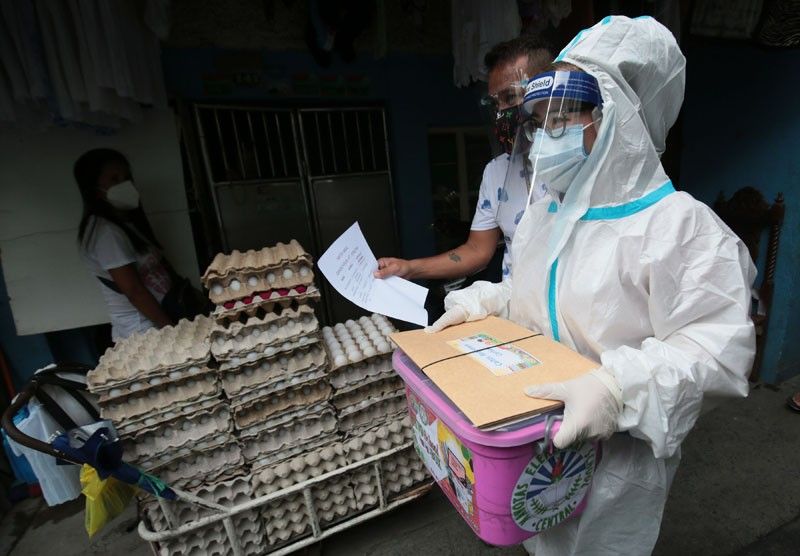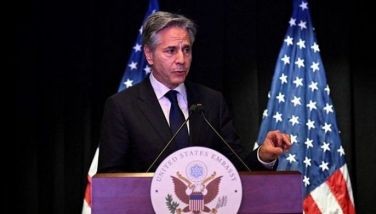Enrollment in NCR public schools up

MANILA, Philippines — The number of students that enrolled in public elementary and high schools in Metro Manila has exceeded last year’s enrollment, in contrast to the significant drop in private school enrollment in the metropolis.
Data released days before the opening of classes on Monday showed that more than 2.18 million students have enrolled in public schools in the region, higher than the 2.05 million student population last year.
All school divisions in Metro Manila have exceeded their previous enrollment, with the highest rate of increase recorded in San Juan (116.9 percent), Pasig (112.5 percent) and Parañaque (109.9 percent).
In terms of actual enrollment, public schools in Manila recorded the highest increase with 22,042 students, followed by Caloocan with 20,680 and Pasig with 16,800.
The situation, however, is different in private schools, where enrollment dropped by as much as 88 percent in one division.
According to the Department of Education regional office in the National Capital Region (DepEd NCR), only 396,860 students enrolled in private elementary and high schools, down from 815,733 last year.
Caloocan private schools had the steepest drop at 11.23 percent, with only 8,929 students compared to last year’s 79,509 enrollees.
Private schools in Quezon City recorded the largest percentage decline in enrollment from last year’s 203,288 to only 53,754 (26.44 percent).
DepEd NCR regional director Malcolm Garma said they would verify the list of enrolled students to trace those who did not enroll this school year.
He said some of the students might be in the provinces while others, particularly those previously enrolled in private schools, might still be assessing the situation and are waiting for the opening of classes.
Garma said late enrollees would still be accepted in public schools even after classes resume next week. “That is our aspiration, for them to enroll,” he added.
Latest DepEd data showed there are 24.72 million students enrolled in public and private elementary and high schools nationwide, representing 89.01 percent of the student population last year.
Over 22.5 million students have signed up in public schools, representing 99.68 percent of last year, while only 2.16 million enrolled in private schools, which is only half of the previous enrollment.
During a press conference yesterday, Garma said they are looking at the possibility of gradually shifting to the use of digital modules starting the second or third quarter of the school year.
“Our shift will be toward the use of digital offline. When we say digital offline, we want to maximize the use of smartphones. Based on surveys and also when we made rounds, almost all households have phones,” he said.
“What we would like to happen is to optimize the use of cellphones. Of course, part of the effort is to heighten the awareness that cellphones are not just for communication and entertainment, but also can be used for learning,” he added.
The DepEd official noted that the use of printed modules is difficult to sustain, citing the cost of printing and reproduction.
Several local government units have also provided students with gadgets that they can use for digital offline learning.
Commission on Human Rights spokesperson Jacqueline de Guia lauded LGUs that provided additional support to students and teachers in their transition to blended learning.
She specifically cited Quezon City, Pasig and Manila that have distributed gadgets and other forms of support to students and teachers.
“These support are crucial in ensuring the right to education in this period of pandemic. It helps alleviate the compounding burden that beset students and teachers as they navigate their way to the new normal of education,” she said.
“Many teachers go out of their way to ensure that students continue to learn. Students and their parents are also willing to make the necessary adjustments and sacrifices in order to afford the additional cost entailed in blended learning,” she added.
De Guia stressed that the right to education is for all and must never be a luxury that only a few can afford.
“The Commission hopes that more local and city governments – with the aid of the Department of Education and the national government – will provide the needed support, especially to the underprivileged ones to ensure equal access to education in these challenging times,” she added.
During the press briefing, Garma said they are looking at the possibility of organizing activities that will allow students to physically meet in schools.
“This is my realization when we were going around… When we were talking to students, they will always say they want to meet their classmates, they want to play with them,” he said in Filipino.
The DepEd official said he will formally propose the conduct of activities to the regional inter-agency task force once Metro Manila is placed under modified general community quarantine.
“If policy will tell us that it is not allowed, we will not push for it,” he said.
“They will not hold classes. We will just bring them to school, maybe in groups of 10, so they can have an activity, meet and play,” he added.
Officials earlier said that face-to-face classes will only be allowed starting January in areas classified as low risk.
- Latest
- Trending






























